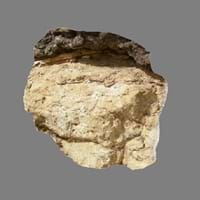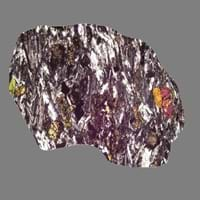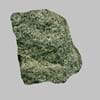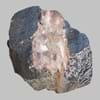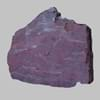Definition
Laterite rock is a type of Sedimentary rock which is rich in iron and aluminium, formed in hot and wet tropical areas
Trachyte is a grey fine-grained volcanic rock which mainly consists of alkali feldspar
Discoverer
Francis Buchanan-Hamilton
Alexandre Brongniart and René Just Haüy
Etymology
From Latin later brick, tile + -ite1
From Greek trakhus rough’ or trakhutēs roughness
Class
Sedimentary Rocks
Igneous Rocks
Sub-Class
Durable Rock, Soft Rock
Durable Rock, Medium Hardness Rock
Group
Not Applicable
Volcanic
Other Categories
Fine Grained Rock, Opaque Rock
Fine Grained Rock, Opaque Rock
Texture
Earthy, Massive, Porphyritic
Aphanitic to Porphyritic
Color
Brown, Buff, Red
Black, Brown, Dark Greenish - Grey, Green, Grey, Light to Dark Grey, White
Durability
Durable
Durable
Appearance
Rough and Banded
Banded
Interior Uses
Decorative Aggregates, Flooring, Interior Decoration
Decorative Aggregates, Flooring, Homes, Interior Decoration
Exterior Uses
As Building Stone, As Facing Stone, Garden Decoration
As Building Stone, As Facing Stone, Paving Stone, Garden Decoration, Office Buildings
Other Architectural Uses
Curbing
Curbing
Construction Industry
Cobblestones, for Road Aggregate, Landscaping, Roadstone
As Dimension Stone, Building houses or walls, Cement Manufacture, Construction Aggregate, for Road Aggregate, Landscaping, Making natural cement, Manufacture of Magnesium and Dolomite Refractories
Medical Industry
Not Yet Used
Not Yet Used
Antiquity Uses
Artifacts, Monuments, Sculpture
Artifacts, Monuments, Sculpture, Small Figurines
Commercial Uses
An Oil and Gas Reservoir, Source of bauxite, Used in aquariums
Cemetery Markers, Creating Artwork
Types
Not Available
Not Available
Features
Is one of the oldest rock, Very fine grained rock
Available in Lots of Colors and Patterns, Is one of the oldest rock, Matrix variable
Archaeological Significance
Famous Monuments
Data Not Available
Data Not Available
Famous Sculptures
Data Not Available
Data Not Available
Formation
Laterite is a type of sedimentary rock which is generally a reddish weathering product of basalt.
Trachyte is an igneous volcanic rock with an aphanitic to porphyritic texture. It is the volcanic equivalent of syenite rock and forms as a result of magmatic differentiation.
Mineral Content
Aluminum Oxides, Biotite, Hematite, Hornblade, Iron Oxides, Manganese Oxides, Micas, Muscovite or Illite, Plagioclase, Pyroxene
Augite, Biotite, Feldspar, Hornblade, Plagioclase, Quartz
Compound Content
Aluminium Oxide, CaO, Iron(III) Oxide, FeO, Potassium Oxide, MgO, MnO, Sodium Oxide, Phosphorus Pentoxide, Silicon Dioxide, Titanium Dioxide
Potassium Oxide, Sodium Oxide, Silicon Dioxide
Types of Metamorphism
Not Applicable
Cataclastic Metamorphism, Contact Metamorphism, Regional Metamorphism
Types of Weathering
Biological Weathering, Chemical Weathering
Biological Weathering, Chemical Weathering, Mechanical Weathering
Types of Erosion
Chemical Erosion, Water Erosion, Wind Erosion
Chemical Erosion, Coastal Erosion, Glacier Erosion, Sea Erosion, Water Erosion, Wind Erosion
Grain Size
Fine Grained
Fine Grained
Fracture
Conchoidal
Not Available
Porosity
Highly Porous
Less Porous
Compressive Strength
Not Available
Cleavage
Not Applicable
Not Available
Toughness
Not Available
Not Available
Specific Gravity
Not Available
2.7
Transparency
Opaque
Opaque
Density
Not Available
2.43-2.45 g/cm3
Resistance
Heat Resistant, Pressure Resistant
Heat Resistant, Impact Resistant, Wear Resistant
Deposits in Eastern Continents
Asia
India
China, India, Iran, Saudi Arabia, Sri Lanka, Taiwan, Thailand, Turkey, Vietnam
Africa
East Africa, Western Africa
Angola, Egypt, Madagascar, Namibia, Nigeria, South Africa
Europe
England, Romania, Scotland
Bulgaria, England, Germany, Norway, Romania, Switzerland
Others
Not Yet Found
Not Yet Found
Deposits in Western Continents
North America
Canada, USA
USA
South America
Not Yet Found
Brazil, Chile
Deposits in Oceania Continent
Australia
Central Australia, Western Australia
New Zealand, Queensland, South Australia, Western Australia
